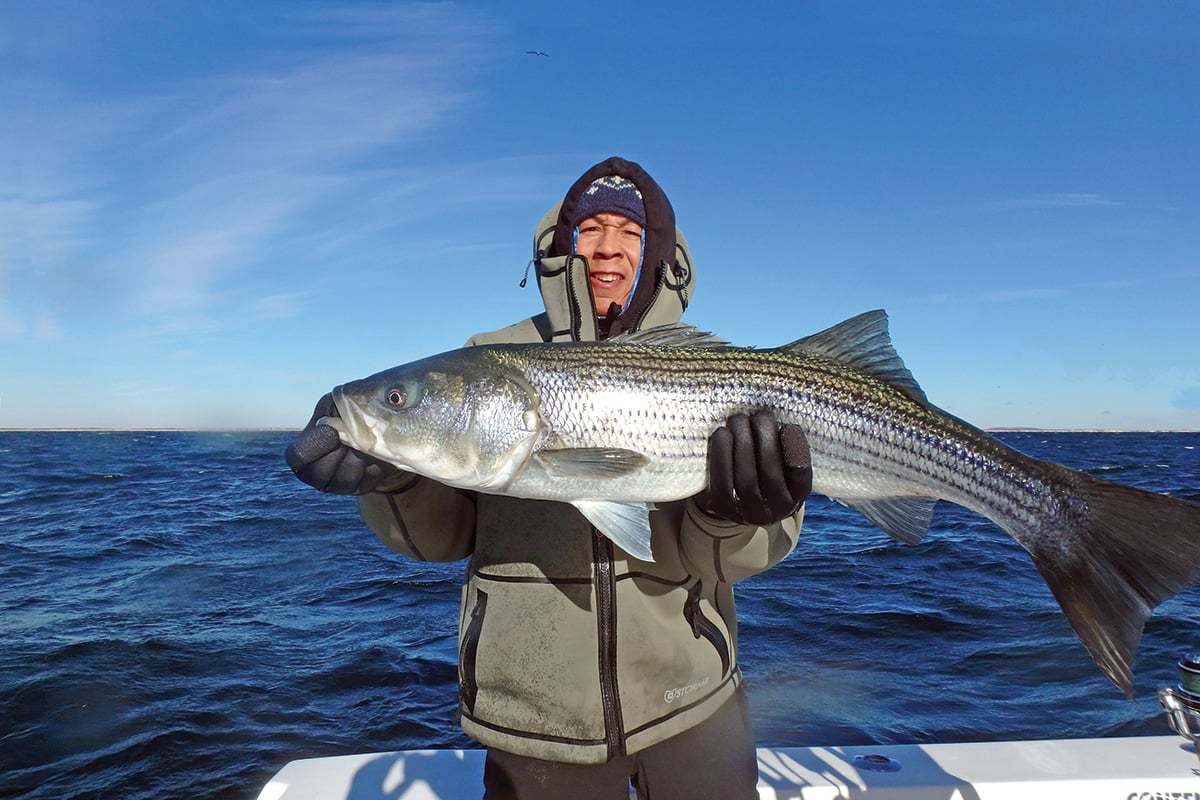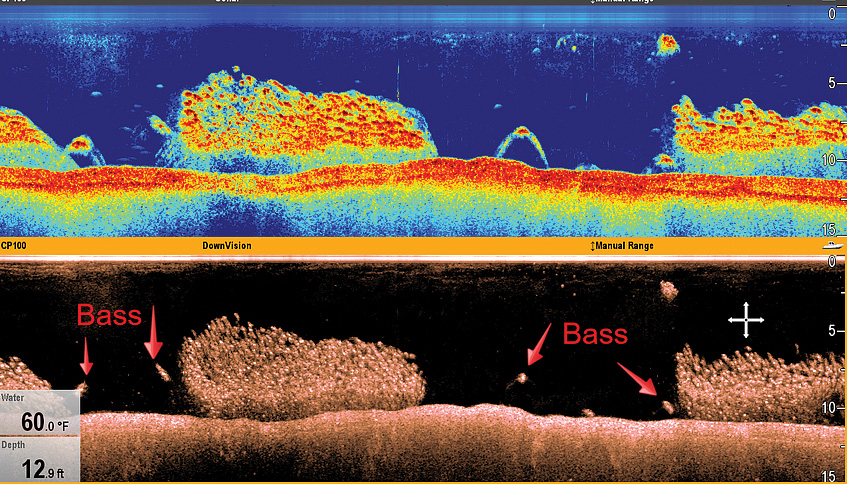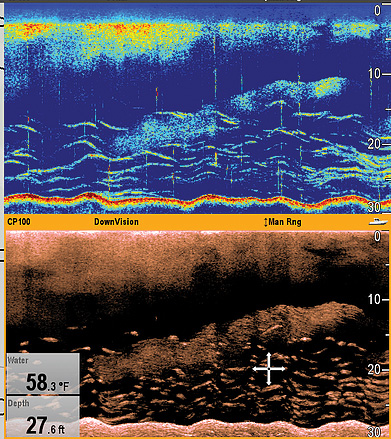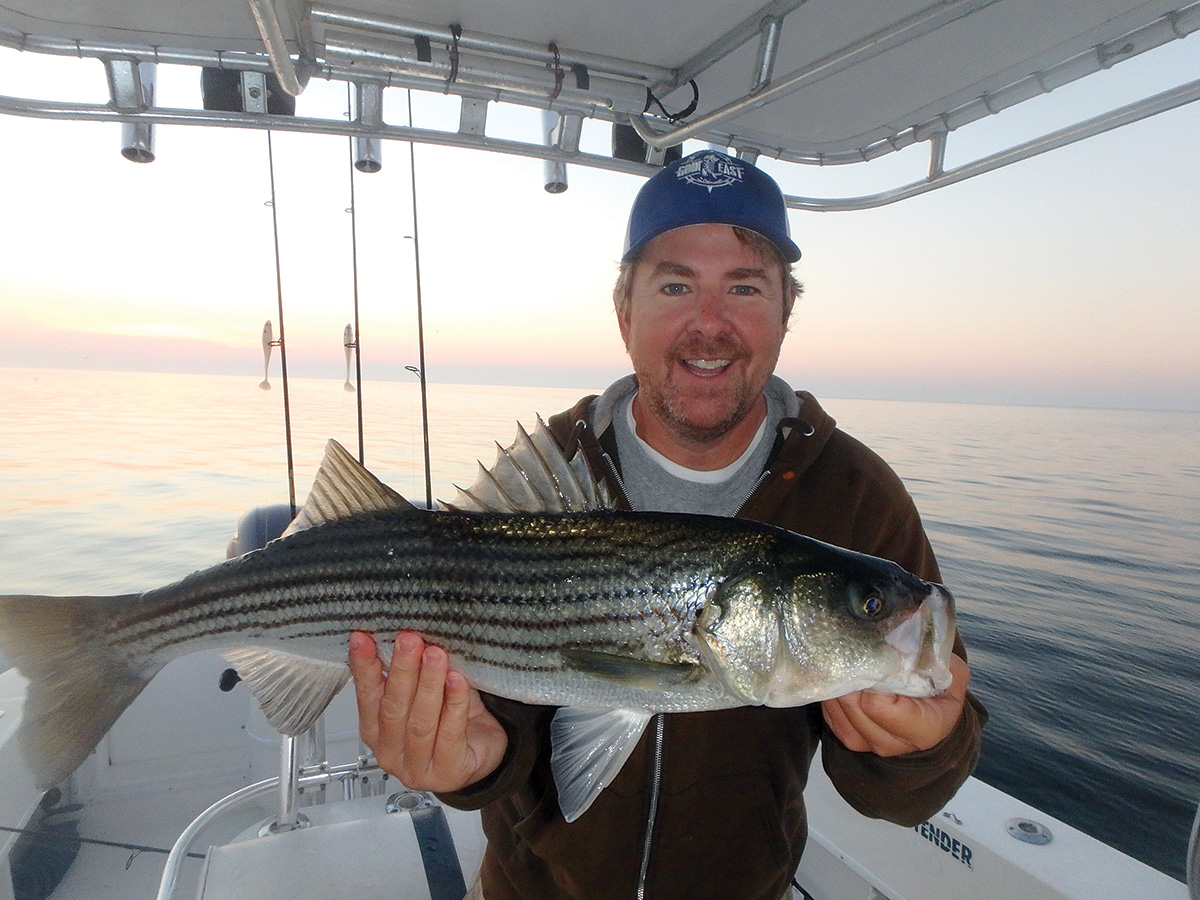
I moved to Blue Point 12 years ago. Blue Point sits between Moriches Inlet and Fire Island Inlet. In the beginning I hated being so far from an inlet. However, once I actually started to put the pieces of the puzzle together I began to like my location. I realized I’m fortunate to be able to hit whichever inlet has the hot bass bite. Over the past two years I went from liking my location to loving it! The bass bite that has occurred in the back bays from Heckscher Park to Bellport during the fall has been incredible.
Personally I believe that the majority of these bass entered the bay through the new/Old Inlet that was opened during Superstorm Sandy. During the last two years there has been an abundance of bait in the back bays. As these bass entered the bay, they headed west and ran into mullet, peanut bunker, adult bunker, spearing and bay anchovies. The bait just kept pouring out of all of the canals, rivers and creeks. The bass had no reason to leave. When this type of fishing occurs you don’t need to be a “sharpie” to land a bunch of bass. However, before these fish move out of the bay I think I might be able help you catch a few more.
When to Go Back Bay
I’m not concerned with tide when I’m fishing in the back of the bay. What I’m concerned about is the time of day. No need to get out before first light. If you can’t see the birds don’t bother leaving the dock. This type of fishing is 99% visual. Nautical twilight is the best time to push off the dock to pursue these bass. The bite usually lasts about 2 hours after the sun pops up over the horizon. If you can’t head out early then head out about 2 hours before the sun sets. Besides saving money on gas by fishing so close to home, I love the fact that just about any weather condition is fishable. The windier the better. Bass seem to love a good hard north wind. The wind actually helps in two ways. If there are a lot of boats out running and gunning, the chop from the wind disguises boat wakes. It also makes it easier for the bass to feed. Smaller bait fish must feel like they are in a washing machine, allowing bass to pick them off easier than when it’s flat calm. Please make sure you know your boat’s limits. I run a 28 foot center console that can handle just about anything the bay throws my way.
When to Go Outside
When chasing bass along south shore beaches, fishing the morning and late afternoon aren’t as important. Don’t get me wrong – if you can get out during those times I suggest you go for it. However, it seems that the bass bite tends to last longer in the ocean. I believe the reason for this is the depth of the water. Boat wakes aren’t as disruptive in the ocean in 50 feet of water the way it is in 6 feet of water in the bay. Bass also tend to stay deeper in the water column, often gorging themselves on sand eels. Unlike bay fishing you really need to pay attention to the weather. A lot of times the ocean may be fishable but getting out of some of South Shore inlets like Moriches and Fire Island is a different story. Luckily we normally have some type of north wind in the fall. This usually has no effect on our inlets. Because you can’t fish for bass outside of state waters (three miles), a hard north wind with small seas is a recipe for bass on the feed.
Birds in the Bay

You know the old saying “a dog is man’s best friend”? Well, that may be true in the home. However out on the water a fisherman’s best friend has wings, and I’m not talking about sea robins. Let’s be honest, if it wasn’t for the birds you would be lucky to catch a quarter of the bass you do in the fall. When you come into birds picking the surface, keep your distance. Nothing puts down blitzing fish like someone getting too close to the action. Whenever I come up on fish busting the surface I look to the birds to figure out where I want to be positioned. The birds will show you the direction in which the bait is moving. I always try to get in front of the birds. It also means that the bass are facing the same direction. If a bass doesn’t see your lure, your lure has zero chance of catching a bass. If you happen to hook a bird, please be kind to it. Slowly reel in the bird and release it. Covering its head with a towel will make it a lot easier. They are very fragile. No need to get mad and do any more harm. Remember how important they are to fishermen.
Birds on the Ocean

Birds in the ocean will act the same way as if they are in the bay feeding. However there are three things that you should pay attention to. First, if birds are just sitting, that is usually an indication that you just missed some type of surface action (bass/blues/albies). Don’t leave. This is the time when I take the boat off plane and I fix my eyes on my fish finder. I drive around slowly until I mark something or see surface activity. Second, look much higher in the air for birds circling. We tend to look for birds just above the horizon but you may be shocked to see flocks of birds way above you. These birds are getting a wider view of where the bait is located. The third thing to look for are birds that you won’t see in the bay. Gannets usually arrive along the South Shore during the month of October. Gannets tend to go after bigger prey (mackerel/herring/adult bunker). If you want a shot at bigger fish they are most likely going to be found under those dive bombing gannets. Quite often bigger baits equal bigger fish.
Gear for the Bay
It’s all about spinning gear when it comes to running and gunning. Keep it light. I usually have four spinning reels spooled with 20 pound braid and 20 pound fluorocarbon leader. I don’t like using swivels. I tie the two lines together with a knot called the Alberto. When it comes to lure selection, for me it’s a no brainer. Six-inch swim shads in the color pearl. Yes, all 4 of my rods have the same exact swim shads tied on. I have tried many, and I do mean many, different lures. I keep going back to the one that I have the most confidence in. There are many different types of swim shads out there; I use a Tsunami 6 inch swim shad. The weight of the shad makes all the difference. The one that I use weighs 2-3/8 ounces. The weight allows it to be cast a long distance and the shad swims within the strike zone.

Gear for Outside
Besides the light spinning gear rigged with swim shads, I will take a heavier spinning outfit for diamond jigging and a heavier spinning set up with a weighted treble hook in case bass are on adult bunker. When it comes to diamond jigging I only use 6 ounce silver jigs that DO NOT have tubes on the hooks. I do not bounce the jig on the bottom. If you are a “bouncer” there is a good chance that you will end up catching skates and dogfish. I drop mine down to the bottom and reel about three quarters of the way up and repeat. This technique is deadly when bass are feeding on sand eels.
After reading this article two things might have appeared to be odd. The fact that I don’t mention using poppers. That’s because the majority of the time bass are on small baits in the fall. Your popper will look out of place to them. There have been a few occasions when some big fish got on schools of adult bunker well back in the bay, and under those circumstances, tossing a popper or metal lip swimmer might be just the ticket, but it is not the norm.
You may have also noticed that all I use is spinning gear. It comes down to what I’m accustomed to using. The use of conventional gear for jigging will do just as well if not better than spinning gear but I’m just more comfortable using spinning. Let’s be realistic, sometimes bass fishing in the fall can be like shooting fish in a barrel. However there are a few things that you can do or look for to increase your chance at catching more fish. Hopefully this article provides a few of those small details that can make a difference for you this fall.



